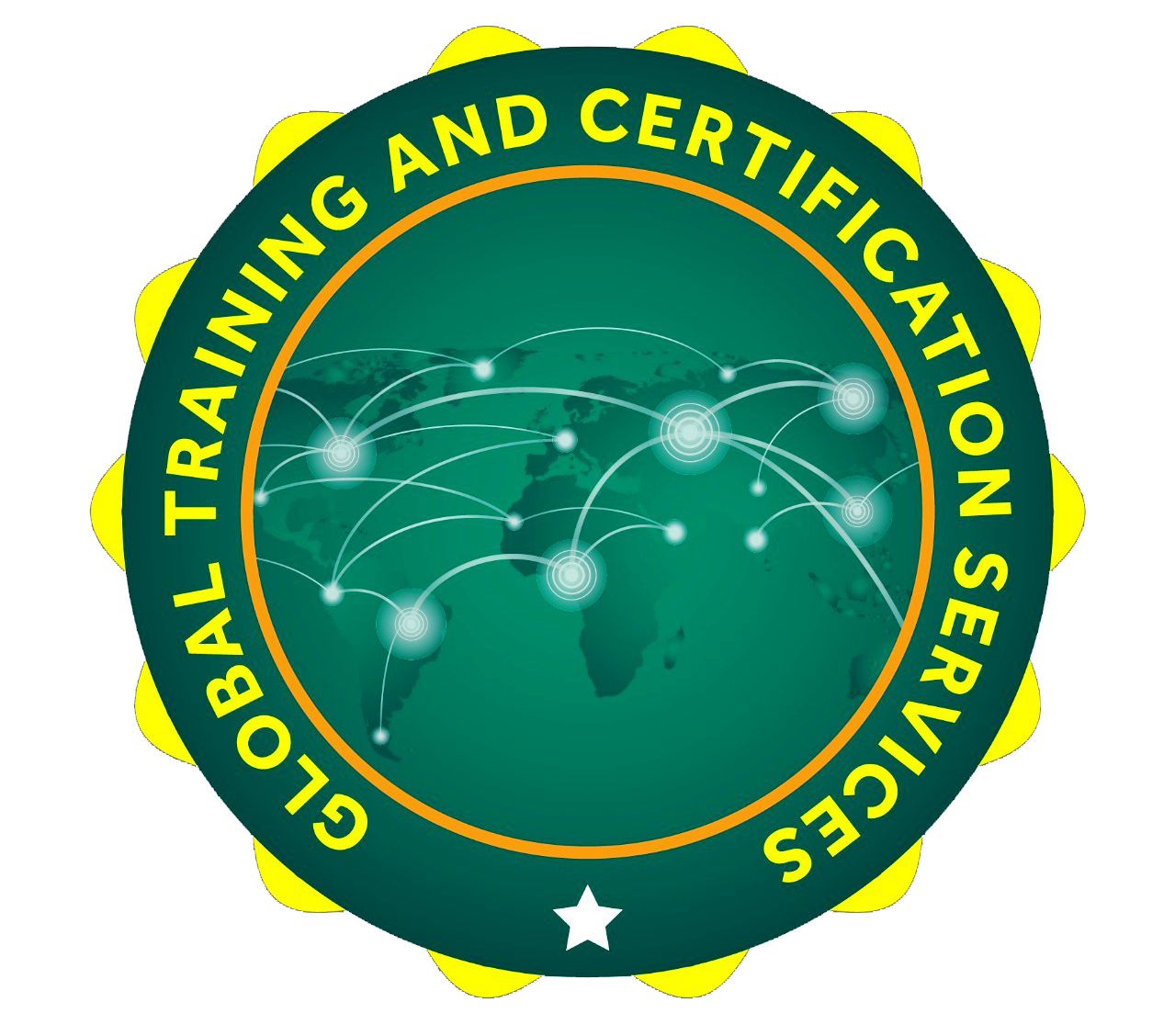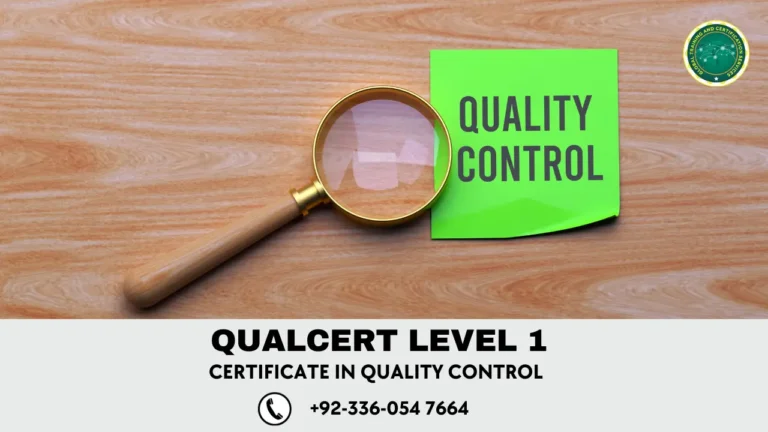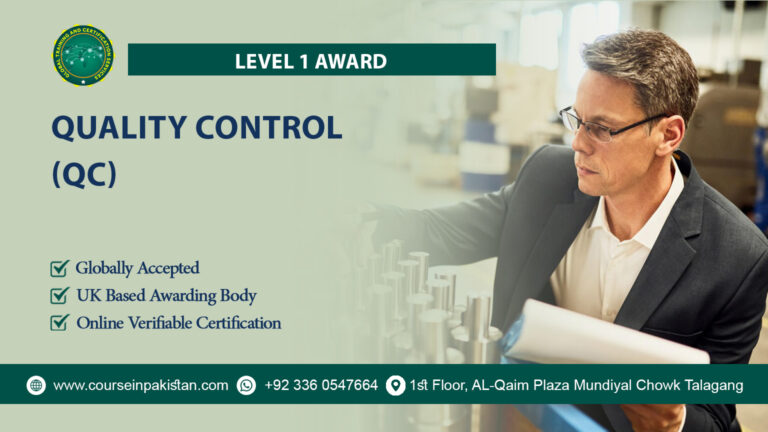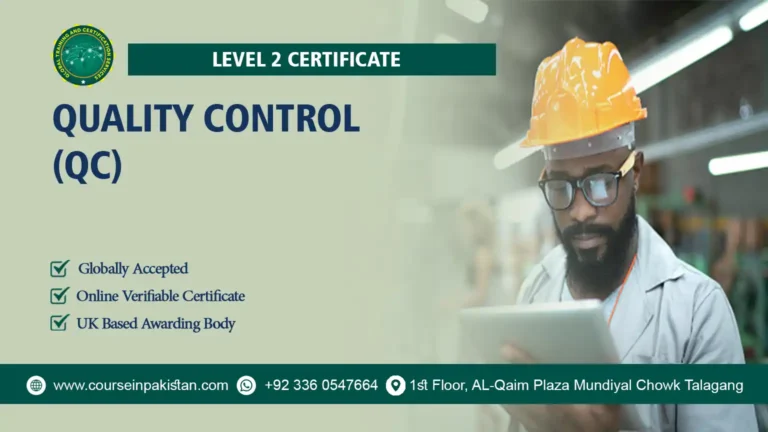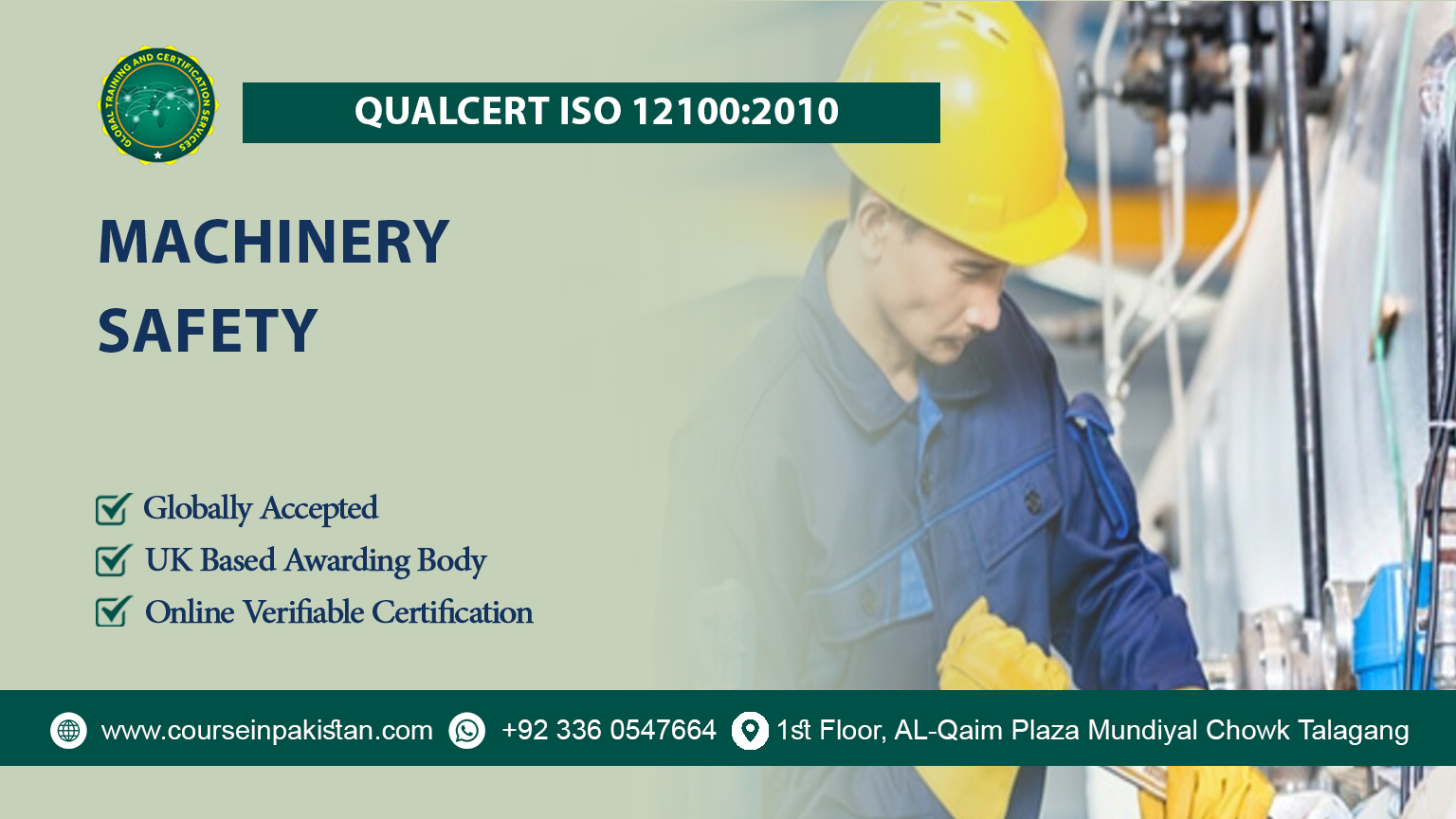
Welcome to the QualCert ISO 12100:2010 in Machinery Safety course! ISO 12100:2010 provides the foundational principles for machinery safety, focusing on risk assessment and risk reduction throughout the machinery lifecycle. This international standard is essential for professionals involved in machinery design, operation, and safety management. By completing this course, you will gain the knowledge and skills necessary to implement ISO 12100:2010 and improve safety practices in your workplace, ensuring a safer working environment and compliance with international safety regulations.
Course Overview:
The QualCert ISO 12100:2010 in Machinery Safety course covers key principles from ISO 12100:2010, which is dedicated to the safety of machinery. The course provides in-depth insights into the risk assessment process, risk reduction techniques, and how to apply these strategies throughout the design and operational phases of machinery. With a strong focus on practical application, this course will equip you with the tools and knowledge required to prevent hazards and minimize risks associated with machinery operations.
You will learn how to analyze potential safety hazards in machinery, implement safety measures effectively, and comply with relevant international standards. The course also includes practical examples and case studies to help you apply your learning to real-world machinery safety scenarios.
Course Benefits:
By completing the QualCert ISO 12100:2010 in Machinery Safety course, you will experience numerous benefits, including:
- Comprehensive Knowledge: Gain expert-level understanding of ISO 12100:2010 and its role in machinery safety, focusing on risk assessment and risk reduction.
- Practical Skills: Learn how to assess risks, design safer machinery, and implement safety protocols effectively.
- Enhanced Safety Practices: Improve the safety standards in your workplace and reduce the likelihood of machinery-related accidents.
- Career Growth: Boost your career prospects in machinery design, safety, and compliance with a globally recognized certification.
- Compliance Assurance: Ensure your machinery and safety practices are in line with international safety standards and reduce legal liabilities.
Course Study Units:
- Introduction to Machinery Safety Standards
- Principles of Risk Assessment
- Risk Reduction Techniques
- Lifecycle Approach to Machinery Safety
- Documentation and Compliance
- Human Factors in Machinery Safety
- Case Studies and Practical Applications
- Emerging Trends in Machinery Safety
- Industry Standards and Best Practices
- Capstone Project: Machinery Safety Implementation
Course Learning Outcomes:
Introduction to Machinery Safety Standards
- Understand the importance of international machinery safety standards and their role in safeguarding operations.
- Explore the purpose and significance of ISO 12100:2010 in enhancing machinery safety.
- Learn about the historical development and evolution of machinery safety regulations and their impact on industry practices.
Principles of Risk Assessment
- Define the concept of risk assessment and its critical role in machinery safety.
- Identify potential hazards associated with different types of machinery.
- Apply both qualitative and quantitative methods to assess risks effectively.
- Prioritize identified risks and propose the most effective risk reduction measures.
Risk Reduction Techniques
- Implement inherent safety measures during the machinery design phase to minimize risks from the outset.
- Utilize protective measures and safety devices to address identified hazards and enhance protection.
- Develop comprehensive safety procedures and clear instructions to ensure safe operation of machinery.
- Integrate safety systems, interlocks, and other controls to mitigate risks and improve safety outcomes.
Lifecycle Approach to Machinery Safety
- Understand the importance of incorporating safety throughout the entire lifecycle of machinery.
- Integrate safety considerations into the initial design and planning stages to avoid potential hazards.
- Ensure compliance with safety standards and regulations during manufacturing, installation, and commissioning processes.
- Develop effective maintenance and decommissioning procedures to ensure ongoing safety through the machinery’s lifecycle.
Documentation and Compliance
- Accurately document risk assessment findings and the proposed risk reduction measures.
- Create machinery safety manuals and documentation in line with ISO 12100:2010 standards.
- Ensure your machinery complies with the relevant safety standards, legal requirements, and regulatory frameworks.
- Understand the legal and regulatory landscape related to machinery safety and ensure your operations meet these requirements.
Human Factors in Machinery Safety
- Acknowledge the role of human factors in machinery-related accidents and safety failures.
- Address human-machine interaction issues by designing machinery that accounts for operator behavior and needs.
- Provide targeted training and education to operators to ensure safe machinery operation and reduce human error.
- Apply ergonomic principles in machinery design to minimize injury risks and promote a safer working environment.
Case Studies and Practical Applications
- Analyze real-world case studies of machinery safety incidents, identifying causes and lessons learned.
- Apply risk assessment and risk reduction techniques to practical, real-life examples.
- Identify potential hazards and implement appropriate safety solutions through interactive hands-on exercises.
- Collaborate with peers to develop tailored safety strategies for specific machinery scenarios.
Emerging Trends in Machinery Safety
- Explore the latest technological advancements and innovations in the field of machinery safety.
- Discuss developments in safety systems, sensors, automation, and their impact on improving safety protocols.
- Identify new challenges and opportunities arising from emerging technologies and evolving industry needs.
- Consider the future of machinery safety standards and regulations in a rapidly changing industrial landscape.
Industry Standards and Best Practices
- Review machinery safety standards specific to different industries and sectors.
- Identify best practices for maintaining machinery safety in diverse environments.
- Collaborate with industry experts to address common safety challenges and implement effective solutions.
- Network with professionals in the machinery safety field to share insights and best practices.
Capstone Project: Machinery Safety Implementation
- Apply the knowledge and skills you’ve gained throughout the course to develop a comprehensive machinery safety plan.
- Conduct an in-depth risk assessment for a real-world machinery scenario, identifying key hazards and risks.
- Design and implement practical risk reduction measures and safety strategies for the scenario.
- Present your capstone project to peers and industry professionals for constructive feedback and evaluation.
Who is This Course For?
The QualCert ISO 12100:2010 in Machinery Safety course is ideal for professionals involved in machinery design, operation, and safety management, including:
- Safety Engineers and Managers: Those responsible for ensuring machinery operates safely within an organization.
- Machine Designers and Engineers: Professionals involved in the design, construction, and maintenance of industrial machinery.
- Compliance Officers: Individuals ensuring that machinery complies with national and international safety standards.
- Health and Safety Practitioners: Professionals working to improve safety protocols in industrial or manufacturing environments.
- Risk Managers: Those tasked with identifying and mitigating risks associated with machinery and its operation.
Future Progression:
After completing the QualCert ISO 12100:2010 in Machinery Safety course, you can further your career and expertise by pursuing additional certifications and professional development opportunities:
- ISO 13849:2015 – Safety of Machinery: Safety-Related Parts of Control Systems: Expand your knowledge in the safety of machinery control systems.
- ISO 45001 – Occupational Health and Safety Management Systems: Gain a deeper understanding of safety management systems in the workplace.
- ISO 14121 – Safety of Machinery – Risk Assessment: Specialize further in machinery risk assessment and learn advanced methods for identifying and evaluating risks.
- Advanced Safety Management Certifications: Take your expertise to the next level by exploring advanced safety management programs in risk assessment, hazard analysis, and safety system design.
- Leadership Roles in Safety and Compliance: Prepare for senior leadership positions in industrial safety, focusing on organizational safety strategies and compliance.
The QualCert ISO 12100:2010 in Machinery Safety course provides you with the essential knowledge and skills to improve machinery safety, reduce risks, and ensure compliance with international safety standards. Whether you’re looking to enhance your career in machinery design, safety, or compliance, this course is your pathway to mastering the key principles of ISO 12100:2010 and implementing them in your workplace.
